Key (online version)
|
|
1a |
| Wings pointed or at least relatively slender and as a consequence somewhat pointed [Fig. 91]. Fore legs wholely dark. |
|
2 |
| b |
| Wings normally built, not conspicuously pointed [Fig. 92]. Fore at least with tibiae and tarsi yellow. |
|
3 |
| |
|
2a |
| Mesonotum mostly shining, at most the notopleura pollinose. Wings short, narrow and very pointed. |
| C. acutipennis (Loew, 1865) |
|
|
| b |
Mesonotum evenly pollinose, more or less dull. Wings somewhat pointed [Fig. 91], but longer and less pointed apically compared to C. acutipennis.
|
| C. atrimana Strobl, 1910 |
|
|
| |
|
3a |
Mesonotum pollinose along anterior margin and anterior of scutellum. Fore femora black.
|
| C. nigrifrons Collin, 1933 |
|
|
| b |
| Mesonotum pollinose along anterior margin, at most some pollinosity on notopleura and/or anterior of scutellum. Fore femora never black, sometimes partly darkened. |
|
4 |
| |
|
4a |
Three pairs of vibrissae, the peristomal setae well developed [Fig. 95]. Occasionally C. flavicauda has three vibrissae on one side of the head, but in that case the peristomal setae are weak. The anteroventral spine on the fore femur is short and positioned close to the apex, about level with the posteroventral seta [Fig. 93].
|
| C. glabra (FallÚn, 1823) |
|
|
| b |
| Two pairs of vibrissae, the peristomal setae weak [Fig. 96]. The anteroventral seta on the fore femur longer and less close to the apex, dsitinctly more towards the middle of the femur than the posteroventral seta [Fig. 94]. |
|
5 |
| |
|
5a |
| Legs partly brownish on coxae and femora. Mesonotum pollinose on notopleura and just anterior of scutellum. Tergite 3 with a triangular, pollinose area anteromedially that reaches at least halfway the tergite (compare [Fig. 98]). |
| C. fuscipes Collin, 1933 |
|
|
| b |
| Legs, including femora and coxae, completely yellow. Mesonotum without pollinosity. Tergite 3 at most with a narrow pollinose band along the anterior margin [Fig. 97]. |
| C. flavicauda Duda, 1922 |
|
|
| |
| Images |
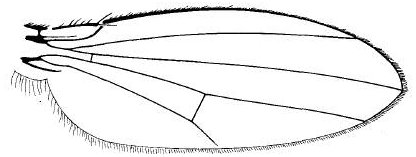 |
| Figure 91. Camilla atrimana, wing. |
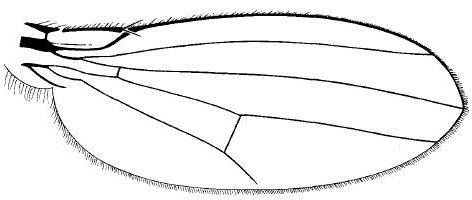 |
| Figure 92. Camilla glabra, wing. |
 |
| Figure 93. Camilla glabra, right front femur. |
 |
| Figure 94. Camilla flavicauda, right front femur. |
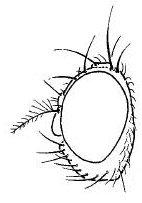 |
| Figure 95. Camilla glabra, head in lateral view. |
 |
| Figure 96. Camilla flavicauda, head in lateral view. |
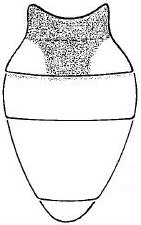 |
| Figure 97. Camilla flavicauda, abdomen in dorsal view. |
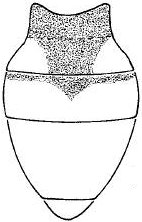 |
| Figure 98. Camilla nigrifrons, abdomen in dorsal view (after Papp, 1973). |















